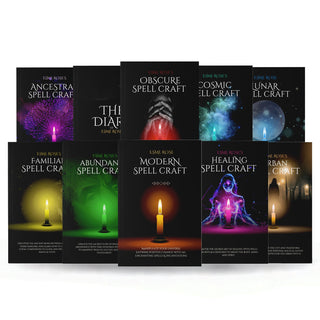Yule, or the Winter Solstice, is an ancient festival marking the shortest day and the longest night of the year. Celebrated in December, this event has been observed for thousands of years across various cultures and symbolizes the rebirth of the sun and the gradual return of light. In this blog, we’ll explore the history of Yule and suggest ways to honor this significant time.
The Origins of Yule
Ancient Roots
Yule’s origins can be traced back to pre-Christian times and was celebrated by many ancient cultures, including the Norse and the Celts. It was a time to honor the gods and goddesses and to celebrate the return of the sun.
Symbolism of the Solstice
The Winter Solstice, occurring around December 21st in the Northern Hemisphere, represents the return of light as the days begin to grow longer. It symbolizes hope, renewal, and rebirth.
When to Celebrate Yule
Date of the Winter Solstice
Yule is traditionally celebrated on the day of the Winter Solstice, which varies slightly each year but generally falls between December 20th and 23rd.
Traditional Celebrations of Yule
Bonfires and Yule Logs
The lighting of bonfires and the burning of the Yule log are iconic Yule traditions. The fire symbolizes the return of the sun's warmth and light. Families would gather around the fire, feast, and celebrate together.
Feasting and Merrymaking
Feasting is a significant part of Yule celebrations. Foods rich in spices and hearty dishes are commonly enjoyed, symbolizing prosperity and warmth.
Decorating with Greenery
Homes were traditionally decorated with evergreens such as holly, ivy, and mistletoe, representing eternal life and the ongoing cycle of nature.
Modern Ways to Celebrate Yule
Decorate Your Home
Adorn your home with symbols of Yule. This can include evergreens, candles, and decorations in gold, green, and red.
Light Candles
As Yule is a festival of light, lighting candles is a simple way to mark the occasion. It symbolizes the sun's light and warmth returning to conquer the darkness.
Exchange Gifts
Exchanging gifts with loved ones is a way of honoring the spirit of giving and abundance associated with Yule.
Reflect and Set Intentions
The Winter Solstice is a perfect time for reflection and setting intentions for the upcoming year. It’s a moment to look inward and prepare for new beginnings.
Conclusion
Yule, or the Winter Solstice, is a time of celebration, reflection, and joy. It marks a turning point in the year, where the longest night gives way to increasing light, symbolizing hope and renewal. Whether through traditional rituals or modern interpretations, Yule offers a chance to pause, celebrate the cycles of nature, and welcome the rebirth of the sun and the gradual return of warmer days.










